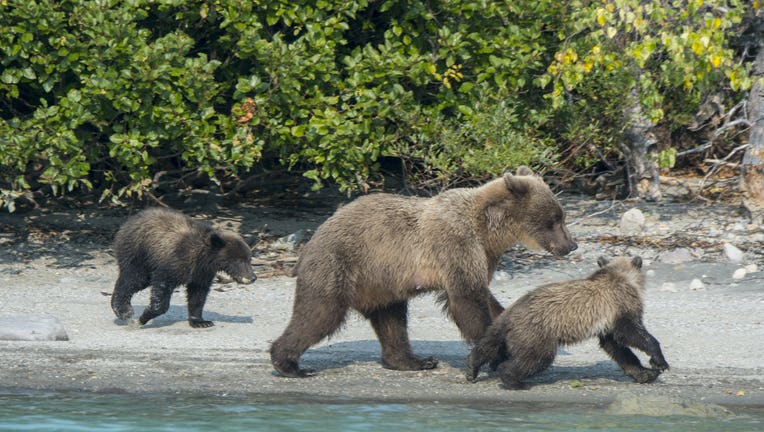Report: Trump administration to lift ban on baiting and killing hibernating bears and wolves in Alaska

WASHINGTON - Hunters venturing into national preserves in Alaska will soon be able to bait hibernating bears from dens with doughnuts and other treats to kill them and other controversial practices under a five-year-old ban that will soon end.
The Trump administration is ending the ban implemented in 2015 with a final rule published in the Federal Register, according to the Washington Post.
The rule ends a ban on certain hunting methods, including using artificial light such as headlamps in wolf dens in an effort to kill mothers and their pups, shooting swimming caribou from a boat and targeting animals from airplanes and snowmobiles, the newspaper reported.
It will take effect in 30 days.
The regulations were ordered in October 2015 under the Obama administration, when the National Park Service determined that Alaska’s practices conflicted with the federal mission to protect wildlife, according to the Post.
State officials argued that the regulations violated Native American hunting rights and were more restrictive than what is permitted on state land.
National Park Service Deputy Director David Vela said in a statement to the newspaper that the federal government will defer to Alaska’s wildlife management on national preserves.
“The amended rule will support the Department’s interest in advancing wildlife conservation goals and objectives, and in ensuring the state of Alaska’s proper management of hunting and trapping in our national preserves, as specified in the Alaska National Interest Lands Conservation Act,” Vela said.
Some in favor of the rule change say it will help control the population of wolves and other predators to increase the numbers of their prey, such as caribou, moose and other game animals that hunters prefer killing for sport. They also say it will help align state and federal regulations in Alaska.
Sen. Lisa Murkowski, R-Alaska, said the decision “protects Alaska’s hunting and fishing traditions and upholds long-standing states’ rights,” and thanked Interior Secretary David Bernhardt for signing the rule, the Post reported.
Conservationists have strongly opposed the rule change, which has been pending since 2018 under former U.S. Secretary of the Interior Ryan Zinke.
“National preserve lands at Denali, Katmai, Gates of the Arctic and others are the very places where people travel from around the world, in hopes of seeing these iconic animals, alive in their natural habitat,” Theresa Pierno, president and CEO of the National Parks Conservation Association, told the Washington Post.
“Shooting hibernating mama and baby bears is not the conservation legacy that our national parks are meant to preserve and no way to treat or manage park wildlife,” Pierno added.
Eddie Grasser, director of wildlife conservation for Alaska Department of Fish and Game, told the New York Times that the tactics would be used sparingly, and mainly by subsistence hunters, who hunt strictly to provide food for themselves and their families.
“Most of our towns and villages are not real connected. You have to fly in and fly out,” he said. “Living off the land is a critical component of rural Alaska lifestyle, so those methods that people are upset about, and I understand why and I understand the misconception, the fact is those are primarily methods that are used by subsistence users in the state of Alaska.”
“The regular hunters in the state don’t hunt that way and neither do the residents that are coming in especially ones that are guided,” Grasser said.
This story was reported from Cincinnati.

